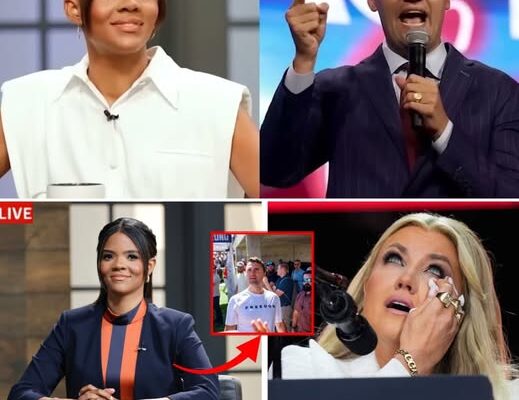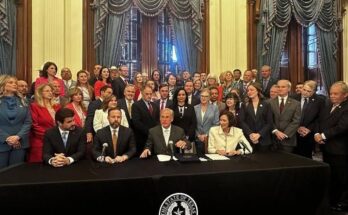This was never just about the incident. It was about what Charlie Kirk found. Candace Owens reveals that just days before it all happened, Kirk launched a massive internal audit at Turning Point USA to trace large donations and appointed a new CEO to “clean house.”
Posted by

In the chaotic aftermath of the incident involving Turning Point USA founder Charlie Kirk, the public was handed a story. But now, that story is fracturing, and the pieces no longer fit. In a series of stunning revelations, commentator Candace Owens has stepped forward, not just to question the official narrative, but to dismantle it entirely. What was presented as a straightforward, if tragic, event is now being painted as something far more sinister: a “complex mix of hidden motives, quiet conflicts, and unspoken secrets.”
Owens, a former colleague of Kirk’s, has declared that the truth has been buried and that she intends to be the one to unearth it. “What happened to Charlie Kirk is just the beginning,” she stated, her words sending a shockwave across social media. The story, she insists, is a battle of “sheer evil versus goodness,” and the version of events fed to the public may have been staged.
At the center of this crumbling narrative is Tyler Robinson, the man indicted in the case. The official portrayal depicted him as emotionally unbalanced, but Owens points to glaring inconsistencies. Why, she asks, would he come forward voluntarily but then refuse to plead guilty? Witnesses who saw him reportedly described him as “confused and bewildered,” not broken or devastated—a small but significant detail.
But the most explosive challenge to the case against Robinson isn’t just behavioral analysis. It’s an alibi. A digital breadcrumb trail and multiple eyewitness accounts have surfaced, placing Robinson miles away at a local Dairy Queen at the exact time the incident occurred. According to these reports, he was seen chatting casually with locals, completely unaware of the chaos unfolding elsewhere.
If Robinson was at the Dairy Queen, the question that changes everything is: Who was the person on the roof?
Chilling surveillance footage, circulated online, shows a dark-clad figure standing on the roof of the auditorium just before the incident. This individual moves with an “eerie calm,” scanning the crowd and adjusting their posture as if “waiting for a signal.” The figure’s calculated, precise movements stand in stark contrast to the profile of Robinson, who friends described as quiet and uninterested in technology, let alone the “sophisticated device” reportedly involved.
This discrepancy has transformed the case from a tragedy into a haunting mystery. “How could someone like Tyler,” Owens pressed, “be involved in such a delicate detail?”
As if the mystery of the man on the roof wasn’t enough, the story took another bizarre turn with the appearance of George Zinn. The 71-year-old man was reportedly detained after taking responsibility for the entire affair. It seemed like a breakthrough, but the confession quickly collapsed, deemed “completely unreliable” by investigators. Zinn ultimately faced other, unrelated charges, leaving the public to wonder why his name ever entered the story at all.
To Candace Owens, this was no accident. She posits that Zinn’s appearance was a “purposeful performance,” a carefully timed distraction. “It was,” she argued, “launched at the right time to deflect attention when the main investigation was at its peak.” Was it a coincidence, or a deliberate move to muddy the waters just as people were starting to ask the right questions?
If the “who” is a mystery, the “why” may be buried deep inside Kirk’s own organization. Owens has connected the incident to a dramatic internal power shift at Turning Point USA, initiated by Kirk himself just days before the event.
First, Kirk had announced plans for a “comprehensive internal audit.” This wasn’t a simple review of paperwork. He was bringing in independent financial experts to trace large donations and uncover why spending had gone over budget. For supporters, it was a bold move toward transparency. For others, Owens suggests, it was a “risky move that ran afoul of the powers that be who want to keep things quiet.”
Second, in the same short time frame, Kirk reportedly signed a sweeping internal memo appointing Justin Stref as the new CEO, granting him “near total executive authority” to restructure the entire organization. The stated goals were clear: cut waste, rebuild management systems, and establish a culture of accountability.
Owens’s analysis paints this as a revolutionary—and dangerous—act. “The decision,” she argues, “may have shaken some of the old guard, accustomed to power and influence.” It wasn’t just a management change; it was a “complete reconfiguration of internal power.” The timing, she insists, is “too coincidental to be a coincidence.”
The pressure wasn’t just internal. Owens has also hinted at mounting external tensions. She referenced reports linking Kirk to a prominent investor, suggesting the relationship carried significant political and financial weight. When the investor, believed to be Bill Ackman, finally responded to questions about the Hamptons, Owens noted he “said a lot without really saying anything.”
Further complicating the “power mosaic,” whispers online began to connect a local politician to the internal audit at Turning Point USA. This same politician had recently been the subject of a public disagreement with Kirk over foreign policy. When the politician’s name was brought up, their reaction was described as “annoyed rather than calm,” spiking public curiosity.
For Owens, these threads—the audit, the new CEO, the investor pressure, the political tension—all weave together. Charlie Kirk’s determination to challenge the old order, she implies, may have been the “boldest and riskiest move of his career.”
Amidst this web of high-stakes power plays, the human cost is perhaps best seen through the eyes of Tyler Robinson’s family. His father released a short, emotional statement expressing deep pain at the media’s portrayal of his son. The family, he said, learned of Tyler’s involvement not from authorities, but from a “surprise private phone call.”
Owens holds this up as proof that the Robinsons are not insiders hiding a secret, but “parents left completely in the dark, helplessly watching their son’s life being swept away by a storm they had no control over.”
The Charlie Kirk affair has become a modern-day Pandora’s box. What was once seen as a clear-cut incident has opened to reveal utter confusion. George Zinn’s false confession, Tyler Robinson’s solid alibi, the internal audit, and the chilling image of the man on the roof all contradict the official story.
This is no longer a story about one man or one incident. It has become a mirror reflecting a “silent tug-of-war between ambition, power, and truth,” played out behind locked doors. It has exposed deep cracks in the systems designed to protect justice, suggesting they sometimes only protect power.
As Candace Owens continues to ask the questions no one else will, the public is left to wonder. What really happened to Charlie Kirk? And in this dizzying maze of contradictions, where does the truth finally lie?



